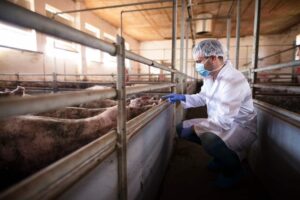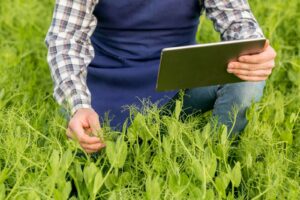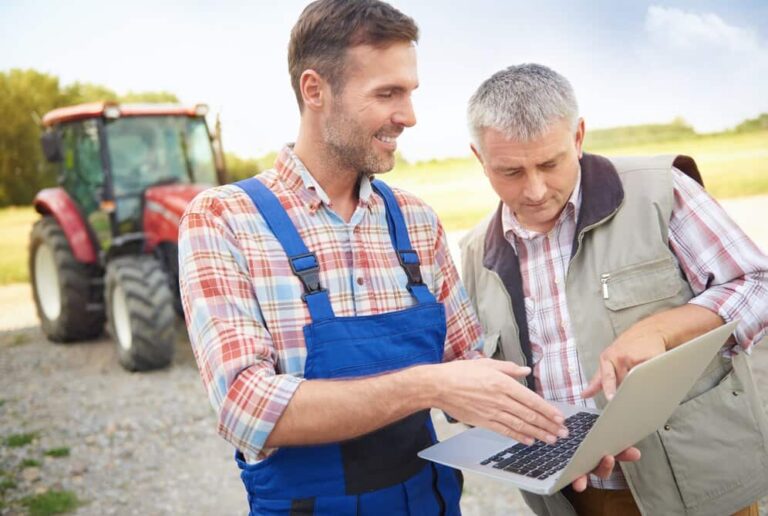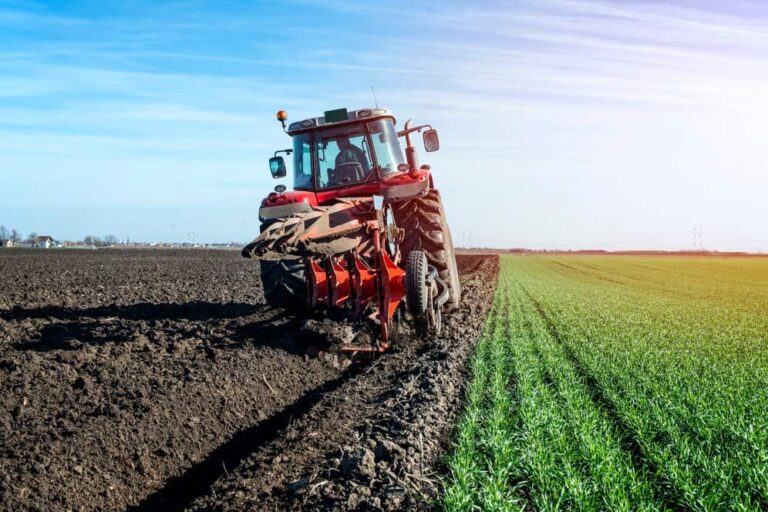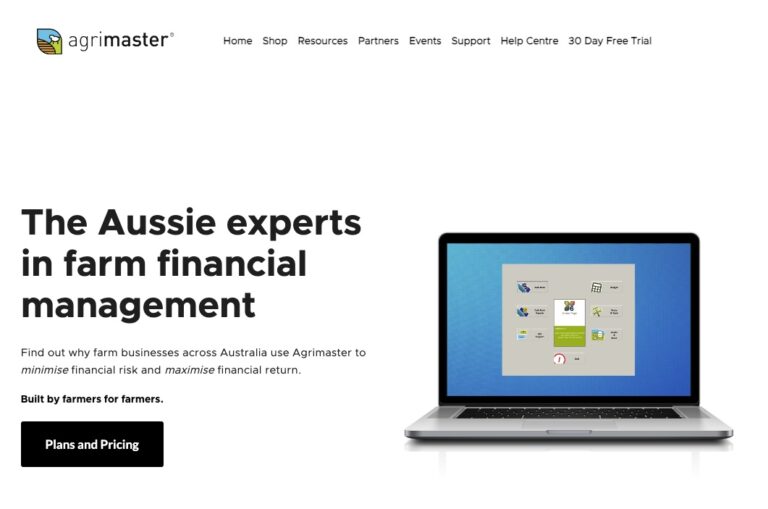Agriculture, far from being a static endeavor, is a complex ecosystem of practices, technologies, and innovations aimed at sustaining life and driving economic growth. The integration of mobile applications into this sphere has revolutionized traditional farming methods, offering new avenues for efficiency, sustainability, and growth.
Seeding Innovation: The Evolution of Agricultural Mobile Apps
The evolution of agricultural mobile apps has been quite remarkable, driven by advancements in technology and the increasing demand for efficiency, productivity, and sustainability in farming practices. Here’s a brief overview of how agricultural mobile apps have evolved over time:
Early Days (Pre-2010):
- In the early days of mobile app development, agricultural apps were basic and mostly informational. They provided farmers with simple tools like weather forecasts, crop calendars, and basic agricultural information;
- These apps were often developed by governmental agricultural departments, universities, or agricultural extension services.
First Wave of Farm Management Apps (2010-2015):
- During this period, there was a surge in the development of farm management apps aimed at helping farmers manage their operations more efficiently;
- These apps offered features such as field mapping, crop planning, inventory management, and task tracking;
- Companies like Trimble, FarmLogs, and AgriWebb emerged as key players in this space, offering comprehensive farm management solutions.
Integration with IoT and Sensor Technology (2015-2020):
- With the proliferation of Internet of Things (IoT) devices and sensor technology, agricultural mobile apps started integrating with these technologies to provide real-time data and insights;
- Apps began to offer features such as soil moisture monitoring, crop health monitoring using drones and satellite imagery, and livestock tracking;
- This integration allowed farmers to make data-driven decisions and optimize their operations for better productivity and sustainability.
Focus on Sustainability and Precision Agriculture (2015-present):
- In recent years, there has been a growing emphasis on sustainability and precision agriculture practices, driving the development of mobile apps tailored to these needs;
- Apps now offer features like variable rate application (VRA) for inputs like fertilizers and pesticides, predictive analytics for pest and disease management, and carbon footprint tracking;
- Startups and established companies alike are innovating in this space, offering solutions to help farmers reduce waste, minimize environmental impact, and improve long-term soil health.
Emergence of AI and Machine Learning (2018-present):
- Artificial intelligence (AI) and machine learning (ML) technologies are increasingly being integrated into agricultural mobile apps to provide advanced analytics and decision support;
- These apps can analyze vast amounts of data, including historical farm data, weather patterns, and market trends, to provide personalized recommendations to farmers;
- AI-powered features include yield prediction, disease detection, crop optimization, and automated decision-making algorithms.
Expansion into Supply Chain Management and Market Access (2020-present):
- More recently, agricultural mobile apps have expanded beyond on-farm management to address challenges related to supply chain management and market access;
- Apps now offer features such as inventory tracking, market price analysis, supply chain transparency, and direct-to-consumer sales platforms;
- This trend reflects the growing importance of connecting farmers directly with consumers and streamlining the agricultural value chain.
Overall, the evolution of agricultural mobile apps has been driven by the increasing need for digital solutions to address the complex challenges facing modern agriculture. As technology continues to advance, we can expect further innovation in this space, with apps becoming even more sophisticated and integrated into the broader agricultural ecosystem.
Harvesting Technology: Trends and Transformations in Farming Apps
In recent years, farming apps have undergone significant transformations to meet the evolving needs of farmers and the agricultural industry as a whole. Several key trends have emerged, shaping the direction of development and innovation in this space:
Integration of IoT and Sensor Technology:
- Farming apps are increasingly leveraging IoT devices and sensor technology to collect real-time data from fields, crops, and livestock;
- Sensors for soil moisture, temperature, humidity, and other environmental factors provide farmers with valuable insights to optimize irrigation, nutrient management, and overall crop health;
- Livestock monitoring devices help track animal health, behavior, and location, enabling early detection of diseases and improving herd management.
Adoption of AI and Machine Learning:
- AI and machine learning technologies are being integrated into farming apps to analyze large datasets and provide actionable insights;
- These apps can predict crop yields, detect pests and diseases, recommend optimal planting times and crop varieties, and optimize resource usage based on historical and real-time data;
- AI-powered decision support systems help farmers make more informed decisions, leading to increased productivity, efficiency, and profitability.
- Focus on Sustainability and Precision Agriculture:
- Farming apps are increasingly incorporating features related to sustainability and precision agriculture practices;
- Precision agriculture techniques, such as variable rate application (VRA) of inputs like fertilizers and pesticides, enable farmers to optimize resource usage and minimize environmental impact;
- Apps also facilitate soil health monitoring, carbon footprint tracking, and crop rotation planning, promoting sustainable farming practices and long-term soil fertility.
Supply Chain Management and Market Access:
- There’s a growing emphasis on connecting farmers directly with consumers and improving transparency and efficiency in the agricultural supply chain;
- Farming apps now offer features for inventory management, market price analysis, online sales platforms, and traceability solutions;
- These apps empower farmers to sell their products directly to consumers through e-commerce platforms, farmers’ markets, and community-supported agriculture (CSA) programs, bypassing traditional distribution channels and increasing profitability.
- Collaboration and Data Sharing Platforms:
- Collaboration and data sharing platforms are emerging to facilitate communication and collaboration among farmers, agronomists, researchers, and other stakeholders;
- These platforms enable farmers to share insights, best practices, and field data with peers, agronomic experts, and agricultural service providers;
- By leveraging collective intelligence and crowd-sourced data, farming apps foster a collaborative approach to problem-solving and innovation in agriculture.
Mobile-First and User-Centric Design:
- With the increasing adoption of smartphones and tablets among farmers, farming apps are designed with a mobile-first approach, ensuring accessibility and usability on mobile devices.
- User-centric design principles are employed to create intuitive interfaces and seamless user experiences, catering to the diverse needs and preferences of farmers across different regions and farming systems.
Overall, these trends reflect a broader shift towards data-driven, technology-enabled farming practices, with farming apps playing a central role in empowering farmers to make informed decisions, optimize resource usage, and enhance sustainability and profitability in agriculture.
Navigating the Ag-Tech Landscape: Exploring Future Directions
Navigating the ag-tech landscape involves understanding the current trends and anticipating future directions to effectively leverage technology for agricultural innovation and sustainability. Here are some key areas that are likely to shape the future of agriculture technology (ag-tech):
Data Integration and Interoperability:
- Future ag-tech solutions will focus on integrating data from various sources such as IoT devices, drones, satellite imagery, weather forecasts, and farm machinery;
- Interoperability standards and platforms will facilitate seamless data exchange and integration, enabling farmers to access comprehensive insights and make data-driven decisions.
Artificial Intelligence and Predictive Analytics:
- AI and predictive analytics will play a crucial role in ag-tech, enabling advanced data analysis and decision support;
- AI algorithms will be used to predict crop yields, identify pest and disease outbreaks, optimize resource allocation, and recommend personalized agronomic practices based on historical and real-time data.
Robotics and Automation:
- Robotics and automation technologies will continue to advance, revolutionizing tasks such as planting, harvesting, weeding, and monitoring;
- Autonomous drones and robots equipped with sensors and cameras will perform precision tasks with greater efficiency and accuracy, reducing labor costs and minimizing environmental impact.
Climate Resilience and Adaptation:
- Ag-tech solutions will increasingly focus on building resilience to climate change and extreme weather events;
- Technologies such as drought-resistant crops, precision irrigation systems, and climate-smart farming practices will help farmers adapt to changing environmental conditions and mitigate risks associated with climate variability.
Regenerative Agriculture and Soil Health:
- There will be a growing emphasis on regenerative agriculture practices aimed at improving soil health, biodiversity, and ecosystem services;
- Ag-tech solutions will support soil health monitoring, carbon sequestration, cover cropping, crop rotation, and other regenerative practices to enhance soil fertility and resilience.
Vertical Farming and Controlled Environment Agriculture (CEA):
- Vertical farming and CEA technologies will continue to gain traction, particularly in urban areas and regions with limited arable land;
- Indoor farming systems, hydroponics, aquaponics, and aeroponics will enable year-round production of fresh produce in controlled environments, reducing water usage, pesticide use, and transportation emissions.
Supply Chain Traceability and Transparency:
- Ag-tech solutions will address the growing demand for supply chain traceability and transparency, enabling consumers to track the origin and journey of agricultural products;
- Blockchain technology, IoT sensors, and data analytics platforms will ensure traceability and integrity throughout the supply chain, enhancing food safety and quality assurance.
- Digital Extension Services and Farmer Connectivity::
- Digital extension services and farmer connectivity platforms will empower farmers with access to agronomic expertise, market information, financial services, and peer networks;
- Mobile apps, SMS-based services, and online platforms will facilitate knowledge exchange, capacity building, and market access for smallholder farmers in remote areas.
Overall, navigating the ag-tech landscape requires a holistic approach that integrates technological innovation with sustainable agricultural practices, stakeholder engagement, and policy support. By embracing emerging technologies and collaborative partnerships, the agriculture industry can address global challenges and create a more resilient and sustainable food system for the future.
Cultivating Efficiency: Top 10 Agricultural Apps for Smart Farming
In a crowded field of agricultural apps, a select few stand out for their innovation, functionality, and impact on farm productivity. From comprehensive farm management solutions to niche tools for specific agricultural tasks, these top 10 apps represent the cutting edge of ag-tech innovation and serve as essential companions for modern farmers.
- FarmLogs: FarmLogs offers tools for field mapping, crop planning, inventory management, and task tracking. It provides real-time data and insights to help farmers make informed decisions and optimize their operations;
- Climate FieldView. Climate FieldView allows farmers to collect and analyze field data, including planting, spraying, and harvesting activities. It offers features such as yield monitoring, satellite imagery, and variable rate prescription mapping;
- AgriWebb. AgriWebb is a livestock management app that helps farmers track animal health, movements, and productivity. It offers features for record-keeping, mustering, and performance analysis, improving herd management and productivity;
- Granular. Granular provides farm financial management tools for budgeting, planning, and analysis. It helps farmers track expenses, monitor profitability, and optimize resource allocation for improved financial performance;
- Farm At Hand. Farm At Hand offers features for crop planning, scouting, and inventory management. It allows farmers to track field activities, monitor crop health, and create digital records for better decision-making;
- MyJohnDeere. MyJohnDeere is an app for managing John Deere machinery and equipment. It provides remote monitoring, diagnostic tools, and maintenance reminders to help farmers maximize uptime and efficiency;
- Trellis. Trellis is an irrigation management app that helps farmers monitor soil moisture levels, schedule irrigation, and optimize water usage. It offers real-time alerts and insights to improve crop yield and water efficiency;
- FarmersEdge. FarmersEdge offers precision agriculture solutions for optimizing inputs, monitoring crop performance, and managing risk. It uses satellite imagery, weather data, and soil sampling to provide personalized insights and recommendations;
- Agrivi. Agrivi is a crop management app that helps farmers plan, monitor, and analyze their crops. It offers features for field mapping, pest and disease monitoring, and yield forecasting, enhancing crop productivity and sustainability;
- Harvest Profit. Harvest Profit is a financial planning and analysis app for farm businesses. It provides tools for budgeting, cash flow forecasting, and profit analysis, helping farmers make strategic financial decisions.
These agricultural apps cover a range of functionalities and can significantly enhance efficiency, productivity, and sustainability on the farm.
Sowing Success: The Intersection of Technology and Agriculture
As the global population grows and environmental challenges mount, the need for innovative solutions in agriculture becomes increasingly urgent. By harnessing the power of mobile technology, farmers can not only increase their productivity and profitability but also contribute to a more sustainable and resilient food system for future generations.
Conclusion
In the ever-evolving landscape of agriculture, mobile apps serve as catalysts for change, driving innovation, efficiency, and sustainability across the farming sector. As farmers embrace these tools and technologies, they are not only transforming their own operations but also shaping the future of food production on a global scale.
